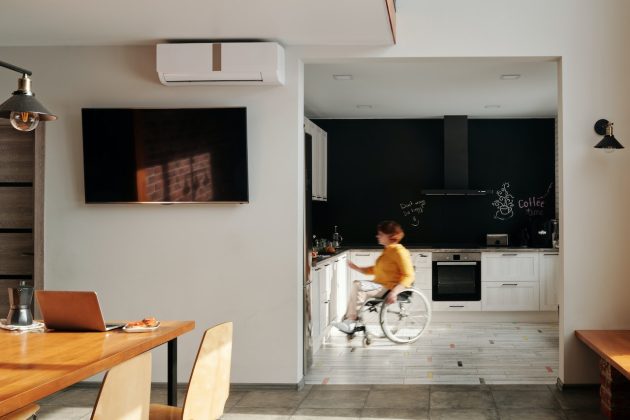In an inclusive society, it is crucial that every home is designed with accessibility in mind. A disability-friendly home not only caters to the needs of individuals with disabilities but also ensures a comfortable and convenient living environment for all.
This comprehensive guide aims to shed light on the essentials of building a disability-friendly home, from the planning stage to the implementation of accessible features. Here, you’ll discover practical tips and innovative ideas to transform your living space into a haven of functionality, safety, and comfort.
Understanding Different Types of Disabilities
The first step in creating a disability-friendly home is to gain an understanding of different types of disabilities. Some disabilities are physical, such as mobility impairment, and may require the use of wheelchairs or other assistive devices. Other disabilities are cognitive impairments, such as autism or intellectual disabilities. These can require visual cues and signage for navigation around the home.
It is also important to consider sensory disabilities, such as hearing impairments or visual impairments. In these cases, accessible features should be designed with a focus on tactile experiences and audiovisual aids.
Planning the Design of Your Home
The next step in building a disability-friendly home is planning the design of your space. Here, you’ll need to consider the needs of each individual and determine how to make modifications accordingly.
When it comes to doorways, they should be wide enough for wheelchair access and equipped with lever-style handles that are easy to open and close. You may also want to install residential elevators in Reno NV, particularly if there’s a risk of someone slipping and falling down the stairs.
When it comes to flooring, consider non-slip tiles or carpeting that is easy to traverse with wheelchairs. It’s also beneficial to install grab bars in areas such as bathrooms and bedrooms for increased safety and security.
Essential Features of a Disability-Friendly Home
A disability-friendly home should include a variety of special features to ensure its accessibility. These features can range from simple modifications, such as raising the height of light switches, to more complex ones like installing ramps and chair lifts.
In terms of lighting, it is important that your living space is well-lit and equipped with dimmers or motion sensors to make it easier for those with visual impairments. Additionally, you may want to consider installing audiovisual aids such as flashing lights or alarms to help people with hearing impairments navigate around the home.
Finally, a disability-friendly home should be equipped with voice recognition technology and other automation systems that allow individuals to control their living environment. This can range from controlling the temperature of a room to operating lights and appliances with voice commands.
Creating an Accessible Environment
Building a disability-friendly home is not simply about making modifications; it’s also about creating an environment that is conducive to independent living. This means ensuring that your living space is designed in such a way that individuals can move around freely without assistance.
It is also important to ensure that your home is equipped with the necessary tools and resources to support independent living. This can include items such as wheelchairs, walkers, shower chairs, and other assistive devices. Additionally, you may want to consider installing features such as automatic door openers or voice-activated lights for added convenience.
Cost Estimation for Building a Disability-Friendly Home
Building a disability-friendly home requires careful planning and investment. Depending on the scope of modifications you plan to make, the cost of building such a home can range from minor renovations to major construction projects.
It is important to consult with experts who are knowledgeable in disability-friendly designs before committing to any project. They can provide an estimate of cost and help you choose the most suitable materials and equipment for your needs.
Conclusion
Creating a disability-friendly home is essential for ensuring an inclusive society. By following this comprehensive guide, you can ensure that your living space is accessible to all individuals regardless of their physical, cognitive, or sensory abilities. With careful planning and the right expertise, you can make your living space a haven of comfort and safety for everyone.

